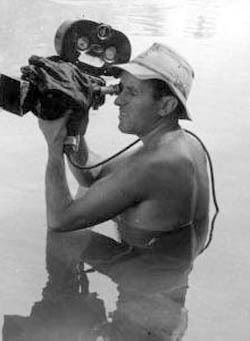
In the morgue of a Korean US Army base, a belligerent officer commands his lackey to pour a cabinet of dirty formaldahyde bottles down the sink, despite the assistant's protests that it will flow directly into the Han River. Months later, a gigantic mutant beast resembling a cross between a tadpole and a velociraptor emerges from the Han, where the Park family runs a modest food stand. After rampaging through some picnics and eating a number of tourists, the beast snatches 11-year-old Hyun-soo Park up in its tail and pulls her into the water. To make matters worse, her family - buffoonish father Gang-Du (Kang-ho Song of
Joint Security Area), grizzled granfather Hie-Bong, alcoholic uncle Hie-il and failed Olympic archer Nam-Joo (Du-na Bae of
Linda Linda Linda) - are abducted at the victims' funeral ceremony on the grounds that the monster was the host of a mysterious virus. Soon after, Gang-Du recieves a cell phone call from Hyun-soo, who is alive in the monster's sewer lair. The family escapes from quarentine and vows to find their little girl at all costs.
The Host (or
Gwoemul, meaning
Monster, as it was known in Korea) is a monster-on-the-loose B-movie actionier that aspires to greater things, but never quite makes it there. Although its crowd panic scenes bear the obvious influence of
Jaws and
War of the Worlds, and its political subtext alludes to the films of George A. Romero, director Joon-ho Bong plays too free and easy with storytelling and tone, creating a movie that just barely falls short of the mark. As revealed in his
interview with Cinema Strikes Back, Bong wanted to do away with cliches of the monster genre. Rather than building suspense around the monster for the first third or half of the movie, the creature emerges from the water to attack pedestrians in broad daylight within the first fifteen minutes of the film. It's the kind of thing that sounds like a good idea, but put into practice, it kills any kind of fear we might have had of the monster, which isn't the worst CGI creation I've ever seen, but isn't the best either. The film's depressing ending, which some might consider ingenious taboo-breaking, I found cheapened the movie as a whole. It's a perfect example of why the monster genre
has cliches - because they work. Tired as some of them may be, if you take them away, you run the risk of making your movie something of a limp fish.
Another manner in which Bong falls short of his American critic-bestowed title of "the Korean Speilberg" is in his characterizations. Unlike Brody, Hooper, and Quint of
Jaws, the Park family never feel like fully rounded out human beings. Gang-Du comes across as more of a bumbling older brother than a father, and although the rest of the cast do fine with what they're given, none of the parts are really written with that much meat. The cast, under Bong's direction, is able to pull off a number of brilliantly orchestrated scenes in which humor is injected into the serious or frightening - case in point, the funeral scene, in which the Parks all cry and hug each other hysterically until they all fall onto the floor like dominoes. The best scenes in the film occur in the sewer catacombs, where the family either track the monster or run from it. With the exception of a few bland and redundant spots, the scenes are all well put together and fun to watch, but unfortunatley, the whole film sum of the parts winds up being less than the sum of its parts.
I'm probably underselling this movie on the basis that American critics are traditionally softer on genre films from overseas than from our own soil. Like last year's
The Descent, it seems that foreign accents or subtitles have way of hypnotizing them into thinking they're watching a better movie than they are. Asian movie fanatics, who gobble up everything that comes from the East like instant ramen, regardless of quality, do little to help.
The Host is a good movie, and worth checking out if you don't feel like you're that interested in
Wild Hogs. But the be-all-end-all of the monster movie it ain't.






